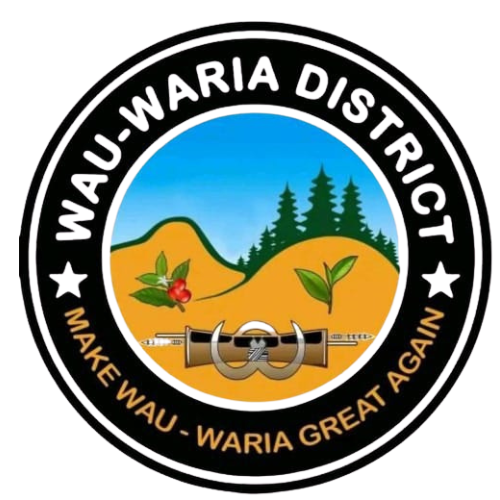In the heart of Morobe Province, Papua New Guinea, the Wau-Waria district is embarking on a transformative journey, placing education at the forefront of its development agenda. Recognizing that education is the cornerstone of sustainable growth, the district’s leadership is implementing strategic initiatives to empower its youth and build a resilient future.
A Strategic Vision: The Five-Year Development Plan
Launched in October 2023, the Wau-Waria District Development Plan (2023–2027) serves as a comprehensive roadmap for the district’s progress. This plan emphasizes critical sectors, with education identified as a pivotal area for investment. The district aims to align its educational objectives with the national Medium Term Development Plan 4, ensuring coherence and effectiveness in its approach .
Empowering Students: The Tertiary Students Scholarship Subsidy (TSSS) Scheme
Understanding the financial barriers that hinder access to higher education, the district introduced the Tertiary Students Scholarship Subsidy (TSSS) Scheme. In 2025, this initiative provided financial support to 227 students, allocating K869,695 to cover tuition fees. The program received 298 applications, reflecting the community’s eagerness to pursue tertiary education .
Local Member of Parliament, Marsh Narewec, emphasized the scheme’s significance: “This initiative ensures that school fees will not hinder students who have the potential to pursue tertiary education.” By alleviating financial constraints, the TSSS Scheme is fostering a culture of academic aspiration and achievement .
Expanding Opportunities: Vocational and Technical Training
Beyond traditional academic pathways, Wau-Waria is investing in vocational and technical education to equip its youth with practical skills. The district has partnered with institutions like the Pacific Training Institute, facilitating programs that graduated 80 students from Wau-Waria, Huon Gulf, and Ok Tedi Education Foundation. These initiatives aim to reduce unemployment and empower young individuals to contribute meaningfully to the local economy .
Additionally, the district is implementing the LEED (Local Education and Employment Development) Program in 30 selected schools. This program aligns with national education reforms, including Early Childhood Education and the 1-6-6 school restructure, to enhance the quality and accessibility of education .
Addressing Challenges: Infrastructure and Policy Concerns
While progress is evident, challenges persist. Infrastructure deficits, such as inadequate school facilities and limited access to remote areas, hinder educational delivery. Moreover, recent education reforms, including the elimination of Grade 8 examinations, have raised concerns about the system’s readiness to adapt. MP Marsh Narewec questioned the preparedness for such policy changes, emphasizing the need for comprehensive planning and resource allocation .
Collaborative Efforts: Partnerships and Community Engagement
Recognizing that education is a collective responsibility, Wau-Waria is fostering partnerships with various stakeholders. The Harmony Hidden Valley Mine Scholarship Program, for instance, offers scholarships to students from Wau-Waria and surrounding areas, supporting those pursuing undergraduate degrees or diplomas in select institutions .
Furthermore, the district is engaging with community leaders, educators, and parents to ensure that educational initiatives are culturally relevant and community-driven. Such collaborative efforts are vital in creating an inclusive and supportive educational environment.
Looking Ahead: A Commitment to Educational Excellence
Wau-Waria’s dedication to education reflects a broader vision of societal transformation. By investing in its youth, the district is laying the foundation for a more prosperous and equitable future. Through strategic planning, financial support, vocational training, and community engagement, Wau-Waria is not only addressing current educational challenges but also cultivating a generation equipped to lead and innovate.

